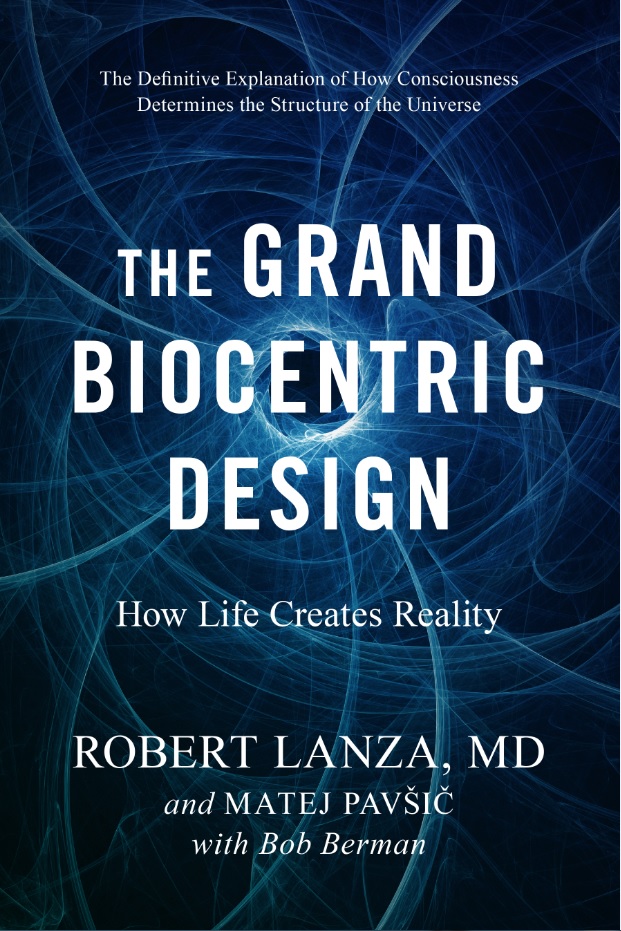The Grand Biocentric Design

HOW LIFE CREATES REALITY
What is consciousness? Why are we here? Where did it all come from? Humans have been asking these questions forever, but science hasn’t succeeded in providing many answers – until now. In The Grand Biocentric Design, Robert Lanza, one of Time Magazine’s “100 Most Influential People,” is joined by theoretical physicist Matej Pavsic to shed light on the big picture that has long eluded philosophers and scientists alike.
“quite thrilling … its notions are exciting ones, and they do a sound job of linking them to observable, replicable experiments. Fans of revolutionary science—or just big, cerebral questions—will enjoy this ambitious work. A thought-provoking dispatch from the frontier of physics.”
—Kirkus Reviews
“a masterpiece”—Anthony Atala, W. Boyce Professor, Wake Forest University
“paradigm-shattering”―Lucian Del Priore, Robert R. Young Professor, Yale University
“It’s fabulous—I couldn’t put it down!” —Ralph Levinson, Professor Emeritus, UCLA
“Robert Lanza is one of the most creative and brilliant scientists I have ever known”—Kwang-Soo Kim, Professor, Harvard University



